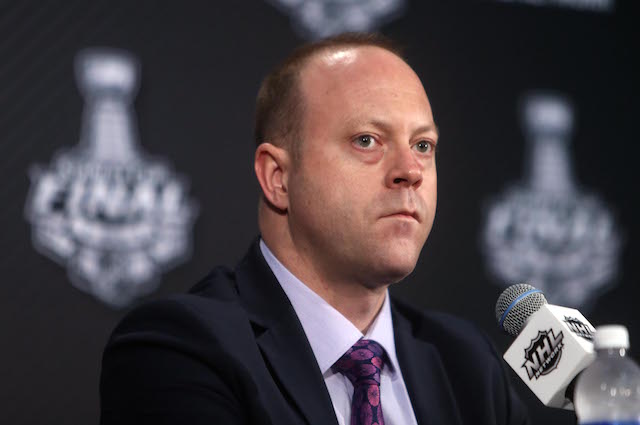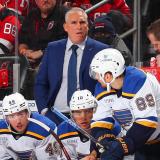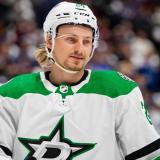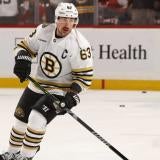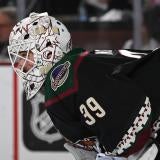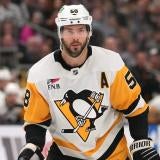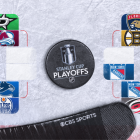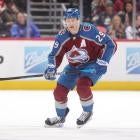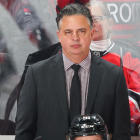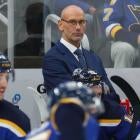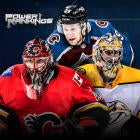Evaluating general managers can be difficult, because it's not always as simple as looking at where a team finishes in the standings and making a decision about his job performance.
Sometimes it's a matter of circumstance and getting the right job at the right time. Some general managers inherit teams that already have the most important pieces in place and do not really have to do anything significant to turn the team into a winner.
Others take over situations that require a total rebuild or overhaul of the roster that takes a couple of years to get right. In some cases, a team can be really bad for a couple of years but still have a general manager that has a clear and well executed plan that has his team going in the right direction. See, for example, Tim Murray and the Buffalo Sabres. On the ice, that team has stunk under his watch. But he also inherited a team that stunk that had few long-term building blocks in place. When you look at the plan he has in place, and the pieces they have added, it's difficult to argue that he doesn't know what he is doing.
It's also difficult because we tend to focus more on the moves that don't work out without looking at why they failed, or also taking into consideration the things that did work. Every move is a gamble of some kind, each one carrying a different set of risks and containing a number of variables that will determine whether or not they turn out to be a success. The GMs that do the best at calculating those risks (who to commit the most money to, the type of players to target in free agency, what positions to invest in at the draft or in terms of cap space, etc.) are the ones that will probably have the most long-term success.
In the end, though, there are no perferct general managers in the league. They all have blemishes on their record, whether it's a bad contract, a bad trade, or a less than stellar haul in the draft.
But there are some that clearly stand out among the rest of their peers.
Here, we look at the top-five.
1) Stan Bowman, Chicago Blackhawks: How do you go against a guy that has been the general manager of two of the past three Stanley Cup winning teams?
The thing about Bowman's time as general manager of the Blackhawks is that if you go back and look at every individual move, you can probably find quite a few that did not work out in the Blackhawks' favor.
But every year the Blackhawks keep coming back as one of the top teams in the NHL, never slowing down and always putting a team on the ice that is a legitimate Stanley Cup contender even with a difficult salary cap situation to manage.
That is no small task.
They are the closest thing the salary cap NHL has to a dynasty, and while most of the credit goes to guys like Jonathan Toews and Patrick Kane for being clutch performers that simply know how to win big games, their championship run is more the result of the front office knowing how to build a team around those guys. Put Toews and Kane on a team that doesn't have the same supporting cast and they're not lifting the Stanley Cup three times in six years.
And that is what is most impressive about the Blackhawks' ability to keep winning. The fact that the supporting cast keeps changing and the fact they have to keep parting ways with significant players. The roster that won the Stanley Cup in 2010 was significantly different than the roster that won the Stanley Cup in 2015.
Still impressive. Still great. But different. And that's what separates Bowman from the rest of the general managers in the league. They committed to keeping their star players and been able to work the salary cap enough to keep a competent supporting cast around them.
You can point to individual moves that have backfired. They paid way too much to keep Bryan Bickell, and they probably should have been able to get more for Nick Leddy in last year's trade with the New York Islanders.
And even though they had to part ways with significant players this offseason (Brandon Saad, Patrick Sharp, Johnny Oduya) they still managed to bring in a lot of guys that can help. They upgraded their second-line center spot going from Brad Richards to Artem Anisimov, they have two young potential impact players on entry level deals (a big part of their success in recent years) in Teuvo Teraveinen and Marko Dano, and they still have their most important core players in place (Kane, Toews, Marian Hossa, Duncan Keith, Brent Seabrook, Niklas Hjalmarsson). Just remember, this is a team that over a two-year stretch back in 2010-11 lost Brian Campbell, Antti Niemi, Kris Versteeg, Dustin Byfuglien and Andrew Ladd and still came back to win two of the next five Stanley Cups because they were able to successfully replenish that depth.
Don't be surprised if they win another one in the next couple of years, even after this summer's salary cap crunch.
2) Steve Yzerman, Tampa Bay Lightning: When Steve Yzerman was hired in Tampa Bay the team was coming off of a three-year postseason drought. Over the next calendar year Yzerman started to completely overhaul the team by bringing in 10 new players from outside the organization. By the end of his first year the team was in Game 7 of the Eastern Conference Final where it would drop a 1-0 decision almost entirely because then-Boston Bruins goalie Tim Thomas was pretty much unbeatable. Any other goaltender at the other end of the ice, and it might have been them playing in the Stanley Cup Final that season.
In the years that have followed, Yzerman and his staff have assembled what is now a powerhouse team in the NHL and one that should continue to be a Stanley Cup contender for the foreseeable future. Even though the team already had Steven Stamkos and Victor Hedman in place when Yzerman arrived, the Lightning have done a masterful job adding the necessary pieces around them. Their scouting and player development has produced a number of players outside of the first round of the draft, including Ondrej Palat, Nikita Kucherov, and Cedric Paquette, and several others as undrafted free agents (Tyler Johnson, J.T. Brown, and Cory Conacher who was traded for current starting goaltender Ben Bishop).
They might have overpaid Ryan Callahan after acquiring him in the Martin St. Louis trade, but that deal also brought the team two additional first-round draft picks (along with a pretty good player in Callahan) for Martin St. Louis, a player that not only wanted out of Tampa Bay, but would only play one more season in the league before retiring.
They've also managed to keep an eye on the future while going for a Stanley Cup in the present by always finding a way to stockpile as many draft picks as possible. After owning nine selections in the 2015 draft (including four of the top-72 picks in what was said to be a very deep draft ... in a year in which they went to the Stanley Cup Final!) they already have nine for 2016 as well.
Those additional picks not only increase the odds of finding a useful NHL player in the draft, they are also assets that can be used in-season to upgrade the team.
3) Ken Holland, Detroit Red Wings: The longest tenured general manager in the NHL, the Detroit Red Wings have never missed the postseason under Ken Holland's watch and don't seem to be in danger of missing anytime soon, even after the team's first coaching change in a decade this offseason.
There was a time, maybe six or seven years ago, that Holland would have been the obvious answer at the top of this list, but even though a couple of other GMs (including one that used to work for him) have jumped over him he is still one of the best in the business.
Lately it hasn't been about big-name moves for the Red Wings. They haven't really made a significant trade that brought a player to the NHL roster for more than a year since acquiring Brad Stuart and Todd Bertuzzi back in 2007 and 2008, and until this summer when they landed Mike Green and Brad Richards they have been mostly quiet in free agency.
Instead, the Red Wings have simply continued to churn out players through their farm system and always have a next wave of talent ready to take over for the current group of stars that start to slow down. And with guys like Gustav Nyquist, Tomas Tatar, Riley Sheahan, Teemu Pulkkinen and Tomas Jurco starting to get their feet wet in the NHL and make an impact, the next wave has arrived.
4) Bob Murray, Anaheim Ducks: This probably wasn't Bob Murray's best summer on the job in Anaheim.
Carl Hagelin was a heck of a pickup from the New York Rangers, but trading for -- and extending -- a 34-year-old Kevin Bieksa looks like a risky move, while the contract extension for Ryan Kesler has the potential to be a nightmare of a deal long-term (short-term, Kesler is still a very good player ... but how is he going to age over that contract?).
But here is the thing about Bob Murray's Anaheim Ducks: They are a really good hockey team (back-to-back 50 win seasons, went as far as Game 7 of the Western Conference Finals this past season) that is still really, really young (they could have as many as 10 players on the roster this season age 25 or younger). And even though they have two players each counting more than $8 million against the cap this season (Core Perry and Ryan Getzlaf) with Kesler counting $5 million against the cap, they are still $16 million under the NHL's salary cap for this season. That is more cap space than any other team in the league.
There is a lot to be said for building a team this good and at that cheap of a price.
5) Jim Nill, Dallas Stars: This will probably be the most controversial name in the top-five because it is based more on process, hype and potential than actual results. But I am still a believer in what the Stars are building under Nill, and with a little better goaltending in 2014-15 (something they should get this year) this would have been a definite playoff team.
Look at it this way: When Nill was hired as the Stars' GM their top-two centers were Cody Eakin and Derek Roy.
Today, their top-two centers are Tyler Seguin and Jason Spezza, and it only cost them Loui Eriksson, Reilly Smith, Matt Fraser, Joe Morrow, Alex Chiasson, Nicholas Paul, Alex Guptill and a second-round draft pick to get them. None of those players will be anywhere near as good as Seguin or Spezza have been -- or will be -- for the Stars.
Every year he's been on the job there has been a major move made by the Stars, including this summer when they picked up Patrick Sharp (and a promising young defenseman in Stephen Johns) for Trevor Daley and Ryan Garbutt, along with the free agent signing of Johnny Oduya.
